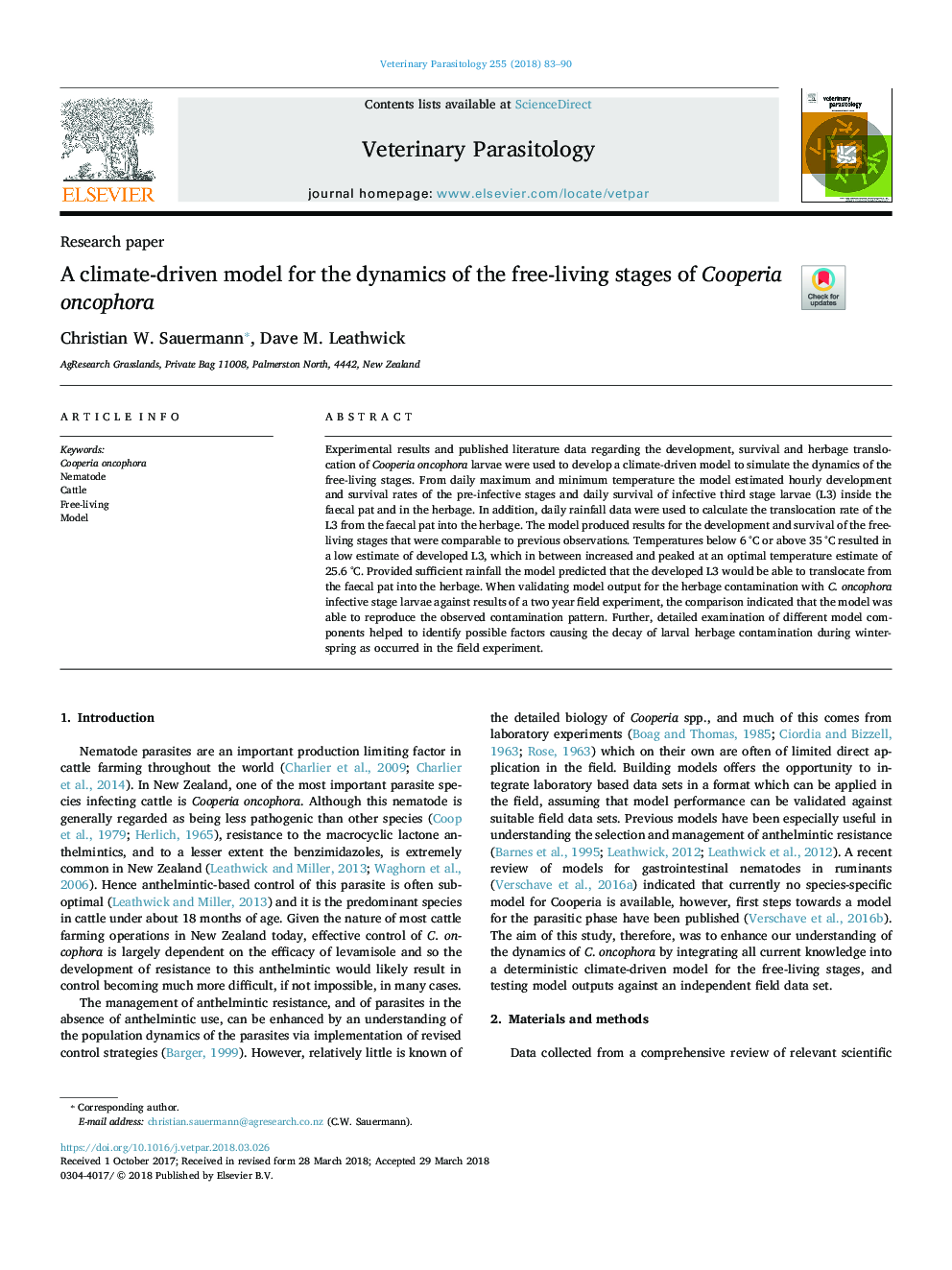| Article ID | Journal | Published Year | Pages | File Type |
|---|---|---|---|---|
| 8505992 | Veterinary Parasitology | 2018 | 8 Pages |
Abstract
Experimental results and published literature data regarding the development, survival and herbage translocation of Cooperia oncophora larvae were used to develop a climate-driven model to simulate the dynamics of the free-living stages. From daily maximum and minimum temperature the model estimated hourly development and survival rates of the pre-infective stages and daily survival of infective third stage larvae (L3) inside the faecal pat and in the herbage. In addition, daily rainfall data were used to calculate the translocation rate of the L3 from the faecal pat into the herbage. The model produced results for the development and survival of the free-living stages that were comparable to previous observations. Temperatures below 6â¯Â°C or above 35â¯Â°C resulted in a low estimate of developed L3, which in between increased and peaked at an optimal temperature estimate of 25.6â¯Â°C. Provided sufficient rainfall the model predicted that the developed L3 would be able to translocate from the faecal pat into the herbage. When validating model output for the herbage contamination with C. oncophora infective stage larvae against results of a two year field experiment, the comparison indicated that the model was able to reproduce the observed contamination pattern. Further, detailed examination of different model components helped to identify possible factors causing the decay of larval herbage contamination during winter-spring as occurred in the field experiment.
Related Topics
Life Sciences
Agricultural and Biological Sciences
Animal Science and Zoology
Authors
Christian W. Sauermann, Dave M. Leathwick,
